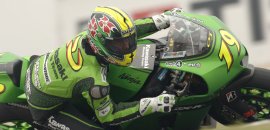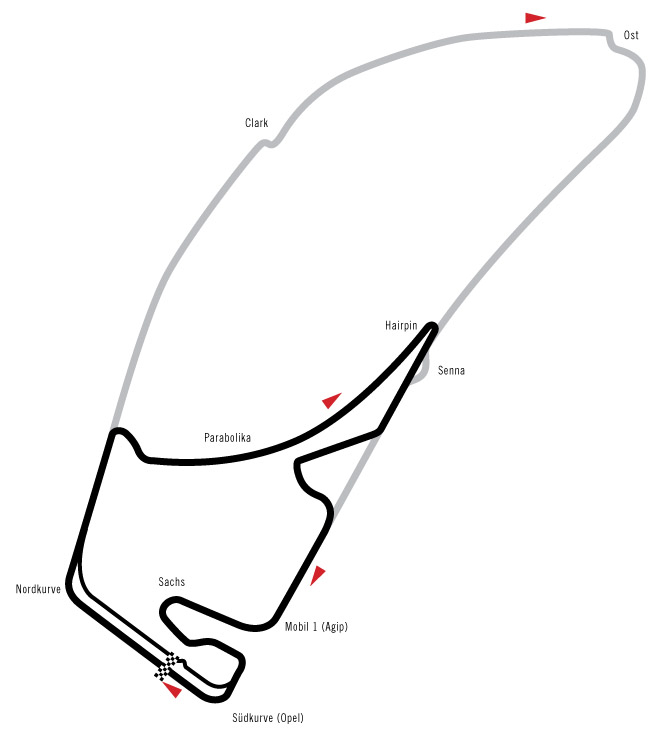HockenheimringFrom Trackpedia
Track SummaryWeb site: http://www.hockenheimring.de/ Address: [Baden-Württemberg, Germany] Google Maps Address: Baden-Württemberg, Germany. Track MapWeather ForecastCurrent Conditions: Mostly Cloudy in Hockenheim, DEU (as of 8:20 PM 7/21/2014) Current conditions (as of 8:20 PM) Forecast for Monday, July 21, 2014 for Hockenheim, DEU Today: Showers / Clear. More information at MSN Weather IntroductionThe Hockenheimring Baden-Württemberg is a motor racing circuit situated near the town of Hockenheim in Baden-Württemberg, Germany. Amongst other motor racing events, it holds the annual Formula One German Grand Prix. Situated in the Rhine valley, the circuit is completely flat, without any changes in elevation. History1930s - 1960sHockenheimring was built 1932 using roads in the forest, originally as an alternative to the Wildpark-Circuit in Karlsruhe, which became forbidden as a racing circuit by German officials. It was used for motorcycle racing and was expanded to be used as test track for Mercedes-Benz and Auto Union in 1936. In 1938 it was renamed to Kurpfalzring, which lasted until 1947. After the war, Grand Prix motorcycle racing events were held, with the German motorcycle Grand Prix alternating between Hockenheim and other tracks. The original circuit was almost eight kilometres long and consisted of two long straights with a long "Eastern" corner in the forest and a U-turn inside Hockenheim joining them together. 1960s - 2000sIn 1965, when the new Autobahn Bundesautobahn 6|A 6 separated the village from the main part of the track, a new version of Hockenheim circuit was built, with the "Motodrom" stadium section. After Jim Clark was killed in 1968 in a Formula 2 racing accident, two chicanes and armco were added. In 1980, another chicane was added at the Ostkurve (east curve), after Patrick Depailler was killed there. This version used to be quite large, with a very long, fast section going through forests essentially consisting of four straights of roughly 1.3 km, separated by a chicane sequence, followed by a more tight and twisty "stadium" section (so called because of all the grandstands situated there) named Motodrom. This made setting racing cars up difficult, as a choice had to be made - whether to run low downforce to optimise speed through the straights and compromise grip in the stadium section, or vice-versa. 2000sIn the early 2000s, F1 officials demanded a shortening of the 6.8 km track, threatening to discontinue to race here, moving to new sites in Asia and elsewhere. The state government of Baden-Württemberg secured the financing of the redesign by Hermann Tilke for the 2002 German Grand Prix. The stadium section remained mainly intact, despite a new surface and a tighter Turn 1 ("Nordkurve"). However, the circuit was dramatically shortened, with the long, sweeping forest section chopped off in favour of more tight corners. As always happens when a circuit is redesigned, this has led to grumbles that the track is not as good as it used to be, although the tight hairpin following the very long back straight offers an overtaking possibility. The circuit has a capacity of 120,000, due to new large grandstands sponsored by Mercedes-Benz.
Track GuideThe follow sections describe the turns or series of turns on the race track in a step by step detail from various people who have driven the track Turn by turn guide to the Hockenheim track Motorcycle turn by turn guide to the Hockenheim track GPS Track Map and Vehicle DynamicsComing soon Typical Lap Times
VideoMore videos from the web
|

